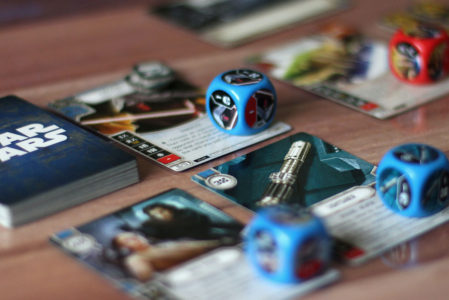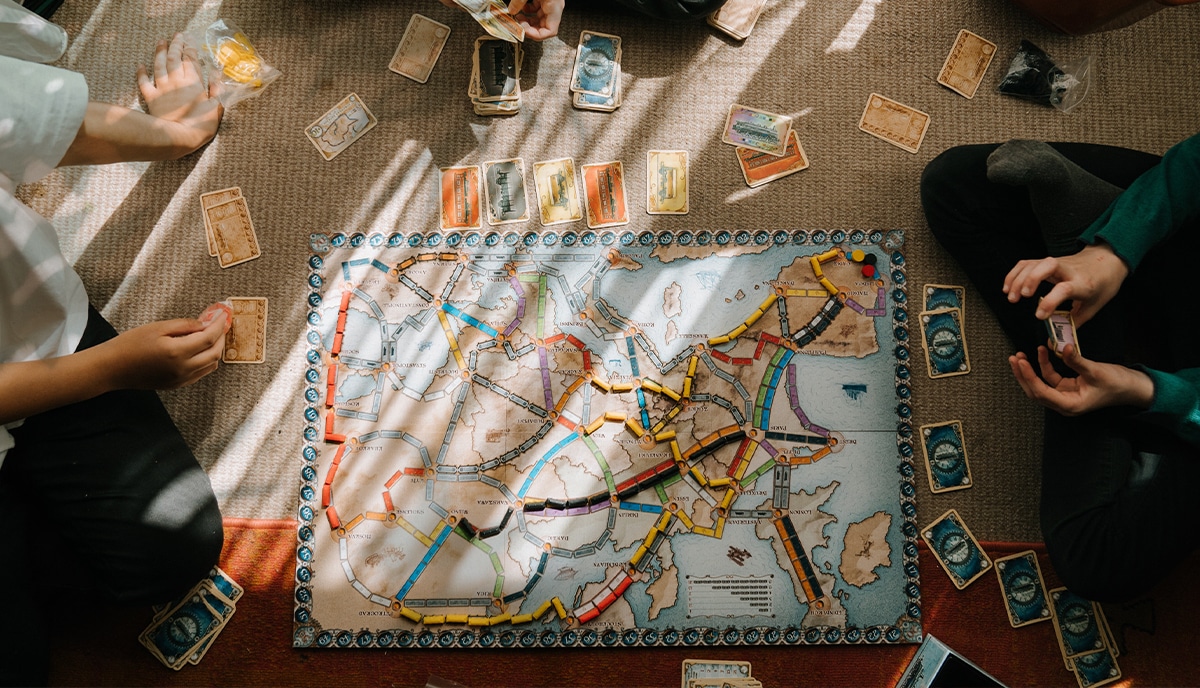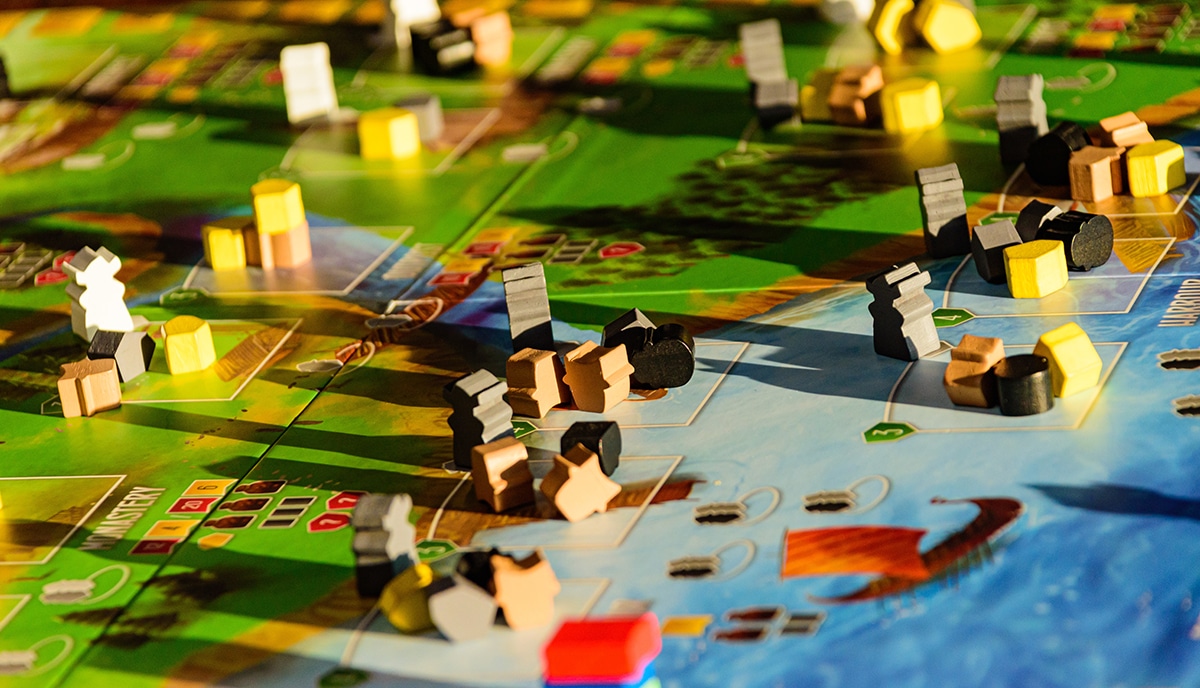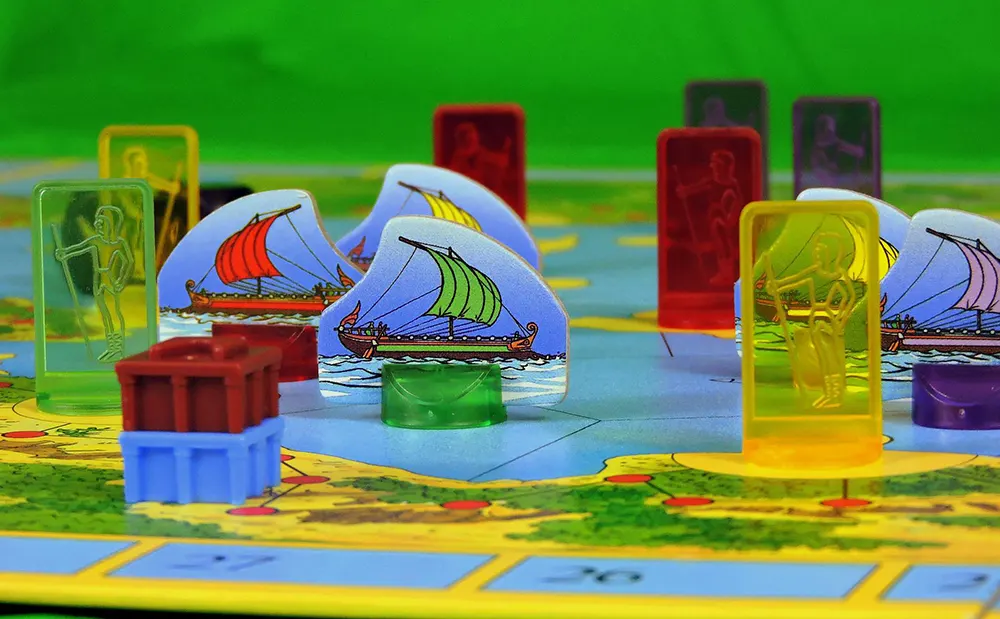Role-playing games are as popular as ever and talented independent game designers bring new games into development every year. If you'd like to create your own fantasy RPG, this guide is for you!
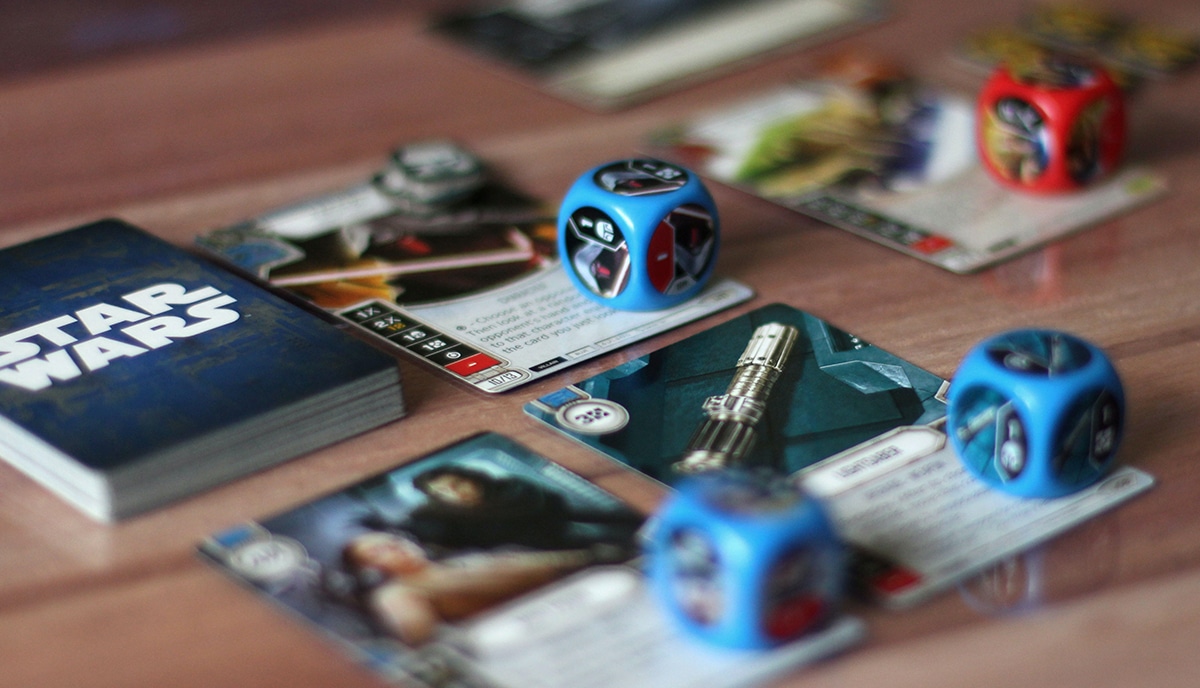
As an international book and games printer and manufacturer with over 25 years of success in the industry, we have always been fascinated by the enduring appeal of the world of fantasy and the endless possibilities that come along with it — whether in novels, board games, trading card designs, or anything else. RPG games are a unique genre of games that allow players to immerse themselves in a world of their own creation. These games offer a sense of freedom and control that is unparalleled by any other genre. At QinPrinting, we love RPGs! Based on decades of experience working with highly talented designers, we'd like to guide you through the process of creating your own fantasy RPG game, from the very beginning to the final stages of launching your game.
Introduction to RPG games
RPG games, or role-playing games, are games that allow players to take on the role of a character in a fictional world. Players are free to explore the world, interact with other characters, and make decisions that will affect the outcome of the game. RPG games are often set in a fantasy world and are filled with mythical creatures, magic, and supernatural powers.
One of the most defining features of RPG games is the ability to customize your character. Players can choose from a variety of races, classes, and abilities, each with their own strengths and weaknesses. This customization allows players to tailor their gameplay experience to their own preferences and playstyle.
Understanding the elements of an RPG game
To create a successful RPG game, it is important to understand the core elements that make up the genre. At its heart, an RPG game consists of three main elements:
- exploration
- combat
- and character development
Exploration is a key element of many fantasy RPG games — think of the all-time classic Dungeons & Dragons, as an example. Players are free to explore the fantasy world, discover new locations, and interact with other players and non-player characters they meet along the way. Exploration is often rewarded with new items, weapons, and abilities that can help players in combat or other skills needed to achieve their quest.
Combat is another common element of RPG games. Players engage in battles with enemies, using a variety of weapons and abilities to defeat them. But combat can also be magical, involving spell-casting and mind attacks, or personality-based; for example, a character with a higher “charisma” may win the confidence of a crowd and take control of a potentially dangerous situation. Combat in RPG games is often turn-based, allowing players to carefully plan their moves and strategies.
Character development is the final core element of RPG games, and for many enthusiasts, it's the most important aspect of all. As players progress through the game, they earn experience points that can be used to level up their character. This leveling up allows players to unlock new abilities and improve their character's stats, making them more powerful in a range of ways. Sometimes, a player might develop a character over the course of dozens of games in a single world.
Types of RPG games
There are several different types of RPG games, each with their own unique features and gameplay mechanics. Some of the most popular types of RPG games include:
- War games: These focus on large-scale combat situations, with players commanding armies rather than individual characters.
- Turn-based combat RPGs: games feature turn-based combat — perhaps gladiators, for example — allowing players to carefully plan their moves and strategies.
- Open-world: here, players set out to explore a vast open world, filled with hidden secrets and treasures and in which they may undertake numerous quests and adventures.
- Tactical RPGs: Tactical games are often a combination of traditional role-play and larger scale wargaming.
This isn't an exhaustive list. And it's worth remembering that many great games combine elements of several of these at different stages of play. For your own game, you can experiment with each in different combinations, or just one. It's entirely up to you!
Creating a concept for your fantasy RPG game
The first step in creating your fantasy RPG game is to come up with a concept or a theme. This concept will serve as the foundation for your game, guiding your decisions as you move forward in the development process and touching on everything from the board (if you use one), the components, the artwork, and the objectives.
To create a concept, start by thinking about the world you want to create. What kind of setting do you envision? What kind of creatures and characters will inhabit this world? What kind of story do you want to tell? You may take inspiration from your favorite fantasy books and movies; often ancient mythologies and folklore are good sources; or your theme may spring from your own wild imaginings alone. Only be careful not to plagiarize someone else's work. Always make it your own.
Once you have a general idea of the world you want to create, start thinking about the gameplay mechanics you want to include. Will your game be turn-based or real-time? What kind of character customization do you want to include? What kind of quests and missions will players undertake?
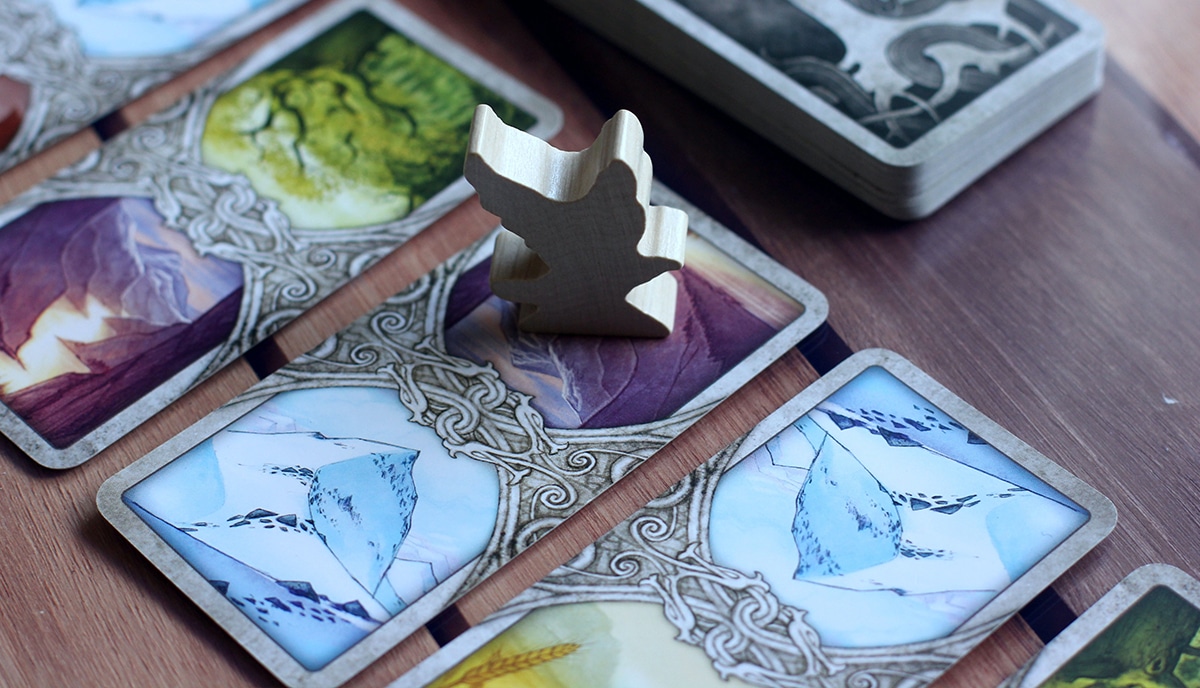
Designing the world and characters
Once you have a concept for your game, it's time to start designing the world and characters. This is where you can really let your creativity shine.
Start by sketching out a map of your game world. Think about the different regions and locations players will visit, and how they will connect to each other. Next, start designing the different creatures and characters that will inhabit your world. Think about their appearance, behavior, and backstory.
When designing your characters, it's important to keep in mind the different classes and abilities you want to include in your game. Make sure your characters are diverse and offer a variety of playstyles for players to choose from.
Creating a storyline and quests
A good storyline and engaging quests are essential to any RPG game. Your story should be interesting and immersive, with well-developed characters and a clear goal for the players to work towards. But they don't need to be on a cosmic scale-engineering the downfall the world-dominating Dark Lord-but could be more local in scale; such as solving the problem of who stole an item from the Castle Keep, say, or rescuing the village's children who were kidnapped by bandits.
When creating quests, think about the different types of quests you want to include. Will you have main story quests, side quests, or both? What kind of rewards will players receive for completing quests? How will quests tie into the overall story of your game? This is all important and deserves a lot of time and attention. A good RPG allows for lots of development and expansion.
Developing a tabletop RPG system
If you're creating a tabletop RPG, you'll need to develop a rules and points system for players to use. This system will include rules for movement, actions, special or magical powers and abilities, one-to-one and multiplayer combat, character creation and development, and gameplay mechanics such as a modular board, dice rolls, and more.
When developing your tabletop RPG system, start by thinking about the different classes and abilities you want to include — dwarves, elves, wizards, wanderers, thieves, monsters, knights, warriors, and so on. Make sure each class offers a unique playstyle and possibilities and has its own strengths and weaknesses. Next, develop rules for combat, including how damage is calculated and how turns are taken.
Finally, create rules for character creation, including how players earn experience points and level up their characters. This is a free process but make sure that it's logical, consistent, and balanced. It must also be fair, so that each character, regardless of their class, has a fighting chance at success.
The importance of balancing game mechanics
Balancing game mechanics is essential to creating a successful RPG game. This is almost always the longest part of design and development and will involve a lot of playtesting and refinement. When balancing your game mechanics, start by testing each class and ability in different scenarios. Make sure each class is viable in both combat and exploration situations. If you find that one class or ability is too powerful, make adjustments until everything is functional, credible, and balanced.
Playtesting and refining your RPG game
Once you have a working prototype of your game, it's time to start playtesting seriously. Playtesting allows you to see how your game works in real-world scenarios and identify any bugs or balance issues as well as get invaluable feedback from players.
When playtesting, make sure to gather feedback from a variety of players with different playstyles. By all means start with your friends and family, but to get the most useful — and honest — feedback, try to get people you don't know — perhaps at a game night or a convention — to give your game a try out. Use this feedback to refine your game and make improvements.
Bringing your RPG game to life with illustrations and graphics
Illustrations and graphics are an important part of any RPG game. They help bring your world and characters to life, and can make your game more immersive and engaging for the players. When creating illustrations and graphics, start by sketching out your ideas on paper or a suitable software. Once you have a solid concept, start creating digital assets using software like Photoshop or Adobe Illustrator, which we recommend for this kind of work. Make sure your illustrations and graphics are consistent with the overall art style of your game. Of course, you may not feel confident with artwork, and that's fine. Most game designers outsource the visual design to a professional illustrator or graphic designer.
Putting it all together
You'll have a lot of work to do to put it all together to build your first prototype and then, when you're ready to print and manufacture your boxed games. But that's where we come in. QinPrinting offers a world-class one-stop game solution including design and artwork support, printing services, and components provision. Our service includes everything from dice and tokens, to notepads, character sheets, and custom miniatures, to rule books, custom boxes, packing and distribution.
Talk to us!
Publishing a custom RPG game can be a complicated and challenging process with dozens of decisions to make along the way. We're here to make the design, printing, and manufacture of your RPG as painless and straightforward as possible. But if there's anything else you'd like to ask, then please get in touch. We'd be happy to answer all your game printing and manufacturing questions and we can give you a no-obligation quote for your project on request. Talk to us — we're here to help!





